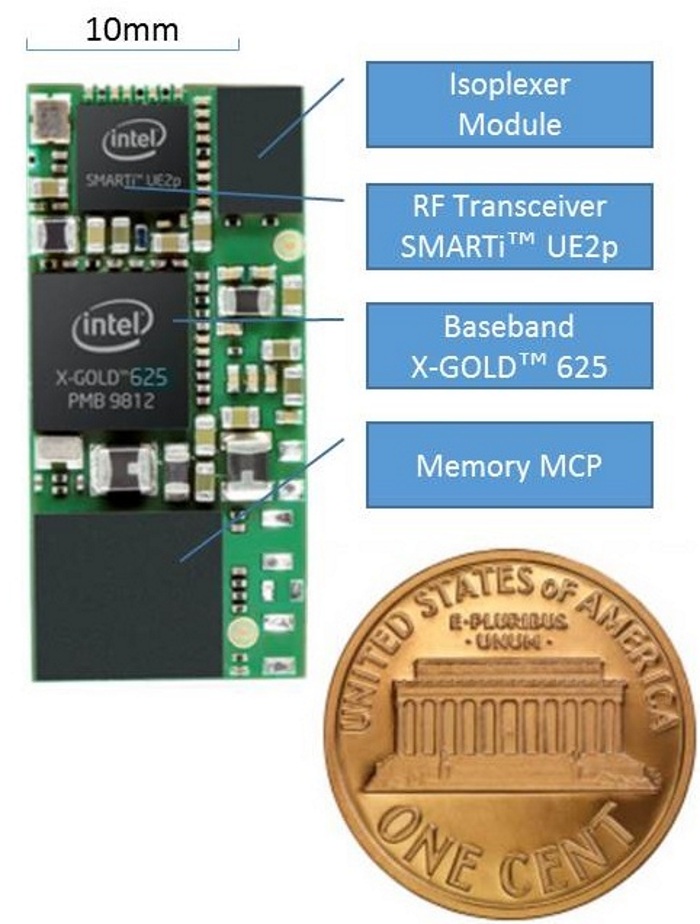With just one blog post, chip maker Intel has effectively established a significant claim in the Internet of Things industry.
That’s because in the post, the company officially unveiled the XMM 6255, a 3G modem no larger than a U.S. penny. Its purpose — beyond generating the obvious wow factor — is to be embedded in a range of “things”, including household appliances, industrial systems, wearable technology, and more, and bring the topic of the Internet of Things from one of hypotheses and postulations to more so focused on actual development and implementation.

According to the announcement, Intel is keen on recent studies that indicate explosive market growth for the Internet of Things industry as a whole, and believes the XMM 6255 will be a catalyst for spurring that movement.
“Today, we commercially launched the XMM 6255 to provide a wireless solution for the billions of 'smart' and connected devices that are expected in the coming years,” the blog post reads.
Measuring in at just 300 sq mm, the chip uses Intel’s new Power Transceiver technology which the company says is the “industry's first design to combine transmit and receive functionality with a fully integrated power amplifier and power management, all on a single chip.”
The chip also incorporates Intel's new SMARTI UE2p radio frequency (RF) transceiver, which is layered onto a 3G power amplifier so as to provide the user with up to 7.2-Mbit/s download speeds and 5.6-Mbit/s upload speeds. The company notes that the distinct radio architecture allows the device to perform exceptionally well in real-world situations, including the ability to provide a reliable connection in low-signal zones like a parking garage or home basement, as well as acting as a means of reliable 3G connection for technologies that otherwise do not have the room for a normal-sized 3G antenna (such as smartwatch, sensors, etc.)
XMM 6255 will be included in the u-blox SARA-U2 Module, which Intel is making available to its partners, and also includes the X-Gold 624 baseband processor, a memory chip, and an isoplexer for antennas.
And it’ll altogether be narrower than a penny.

Worth highlighting about the SARA-U2 module are its power management features, which include a PA DCDC converter as well as direct-to-battery power. This decision is what ultimately allowed for a smaller modem and will, in turn, help “manufacturers minimize their build of material costs.” It also protects “the radio from overheating, voltage peaks, and damage under tough usage conditions, which is important for safety monitors and other critical IoT devices.”
Ultimately, the XMM 6255 will simplify the design of future connected “things” and minimize overall device development costs. This translates to more products being launched by developers, more quickly and in a more cost-effective manner.
Learn more via Intel
Advertisement
Learn more about Intel





